 With the effects of the depreciation of sterling feeding through into higher prices, so the rate of inflation has risen. The latest figures from the ONS show that in the year to April 2017, CPI inflation was 2.7% – up from 2.3% in the year to March. The largest contributors to higher prices were transport costs and housing and household services.
With the effects of the depreciation of sterling feeding through into higher prices, so the rate of inflation has risen. The latest figures from the ONS show that in the year to April 2017, CPI inflation was 2.7% – up from 2.3% in the year to March. The largest contributors to higher prices were transport costs and housing and household services.
But wage increases are not keeping up with price increases. In 2017 Q1, the average annual growth rate in regular pay (i.e. excluding bonuses) was 2.1%. In other words, real pay is falling. And this is despite the fact that the unemployment rate, at 4.6%, is the lowest since 1975.
The fall in real wages is likely to act as a brake on consumption and the resulting dampening of aggregate demand could result in lower economic growth. On the other hand, the more buoyant world economy, plus the lower sterling exchange rate is helping to boost exports and investment and this could go some way to offsetting the effects on consumption. As Mark Carney stated in his introductory remarks to the May 2017 Bank of England Inflation Report:
The combination of the stronger global outlook and sterling’s past depreciation is likely to support UK net trade. And together with somewhat lower uncertainty, stronger global growth is also likely to encourage investment as exporters renew and increase capacity.
According to the Bank of England, the net effect will be modest economic growth, despite the fall in real wages.
In the MPC’s central forecast, quarterly growth is forecast to stabilise around its current rate, resulting in growth of 1.9% in 2017 and around 1¾% in each of the next two years.
 But forecasting is dependent on a range of assumptions, not least of which are assumptions about consumer and business expectations. These, in turn, depend on a whole range of factors, such as the outcome of the UK election, the Brexit negotiations, commodity prices, world growth rates and international events, such as the actions of Donald Trump. Because of the uncertainty surrounding forecasts, the Bank of England uses fan charts. In the two fan charts illustrated below (from the May 2017 Inflation Report), the bands on constructed on the following assumptions:
But forecasting is dependent on a range of assumptions, not least of which are assumptions about consumer and business expectations. These, in turn, depend on a whole range of factors, such as the outcome of the UK election, the Brexit negotiations, commodity prices, world growth rates and international events, such as the actions of Donald Trump. Because of the uncertainty surrounding forecasts, the Bank of England uses fan charts. In the two fan charts illustrated below (from the May 2017 Inflation Report), the bands on constructed on the following assumptions:
If economic circumstances identical to today’s were to prevail on 100 occasions, the MPC’s best collective judgement is that CPI inflation or the mature estimate of GDP growth would lie within the darkest central band on only 30 of those occasions and within each pair of the lighter coloured areas on 30 occasions.
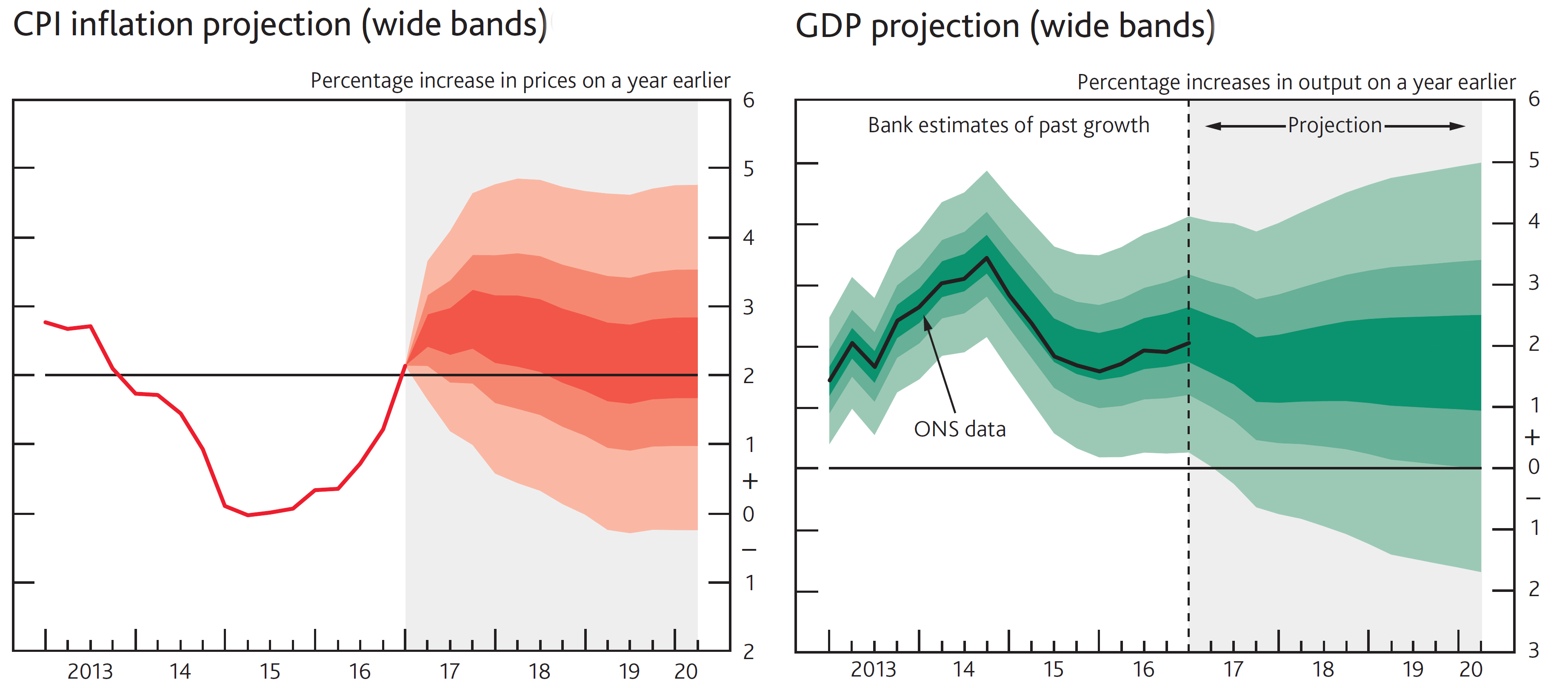
The charts and tables showing the May 2017 projections have been conditioned on the assumptions that the stock of purchased gilts remains at £435 billion and the stock of purchased corporate bonds remains at £10 billion throughout the forecast period, and on the Term Funding Scheme (TFS); all three of which are financed by the issuance of central bank reserves. They have also been conditioned on market interest rates, unless otherwise stated.
The wider the fan, the greater the degree of uncertainty. These fan charts are wide by historical standards, reflecting the particularly uncertain future for the UK economy.
But one thing is clear from the latest data: real incomes are falling. This is likely to dampen consumer spending, but just how much this will impact on aggregate demand over the coming months remains to be seen.
Articles
UK real wages drop for first time in three years Financial Times, Sarah O’Connor (17/5/17)
Bank of England warns Brexit vote will damage living standards The Guardian, Katie Allen (11/5/17)
UK wage growth lags inflation for first time since mid-2014 BBC News (17/5/17)
Britons’ Falling Real Wages Show Challenging Times Have Arrived Bloomberg, Scott Hamilton and Lucy Meakin (17/5/17)
Jobs market will suffer a Brexit slowdown, say experts The Guardian, Angela Monaghan and Phillip Inman (15/5/17)
Pay will continue to be squeezed, employers’ survey suggests BBC News, Kamal Ahmed (15/5/17)
Brexit latest: Real wages falling, Office for National Statistics reveals Independent, Ben Chu (17/5/17)
UK inflation climbs to four-year high, beating forecasts Financial Times, Gavin Jackson (16/5/17)
Why is UK inflation at a four-year high? Financial Times, Gavin Jackson (19/5/17)
A blip, or a test of hawks’ patience? Economists respond to high UK inflation data Financial Times, Nicholas Megaw (16/5/17)
UK inflation rate at highest level since September 2013 BBC News (16/5/17)
Inflation jumps to its highest level since 2013 as Brexit continues to bite Business Insider, Will Martin (16/5/17)
UK GDP growth weaker than expected as inflation hits spending The Guardian, Katie Allen (25/5/17)
UK economic growth estimate revised down BBC News (25/5/17)
Reports
Inflation Report, May 2017 Bank of England (11/5/17)
Labour Market Outlook, Sping 2017 Chartered Institute of Personnel and Development (May 2017)
Data
Statistical Interactive Database – interest & exchange rates data Bank of England
Inflation and price indices ONS
Earnings and working hours ONS
Second estimate of GDP: Jan to Mar 2017 ONS Statistical Bulletin (25/5/17)
Questions
- Find out what has happened to the dollar/sterling and the euro/sterling exchange rate and the sterling exchange rate index over the past 24 months. Plot the data on a graph.
- Explain the changes in these exchange rates.
- Why is there negative real wage growth in the UK when the rate of unemployment is the lowest it’s been for more than 40 years?
- Find out what proportion of aggregate demand is accounted for by household consumption. Why is this significant in understanding the likely drivers of economic growth over the coming months?
- Why is uncertainty over future UK growth rates relatively high at present?
- Why is inflation likely to peak later this year and then fall?
- What determines the size and shape of the fan in a fan chart?
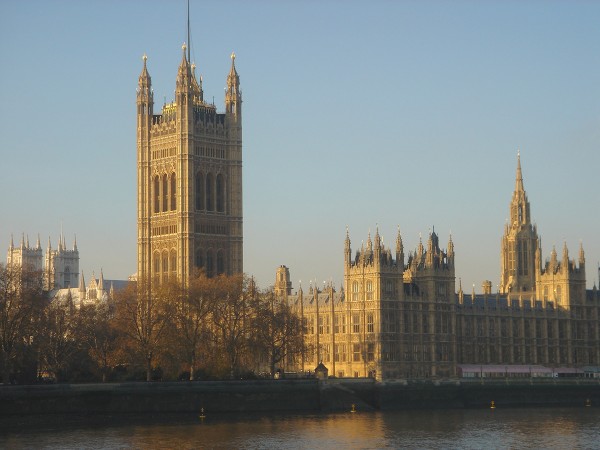 According to the theory of the political business cycle, governments call elections at the point in the business cycle that gives them the greatest likelihood of winning. This is normally near the peak of the cycle, when the economic news is currently good but likely to get worse in the medium term. With fixed-term governments, this makes it harder for governments as, unless they are lucky, they have to use demand management policies to engineer a boom as an election approaches. It is much easier if they can choose when to call an election.
According to the theory of the political business cycle, governments call elections at the point in the business cycle that gives them the greatest likelihood of winning. This is normally near the peak of the cycle, when the economic news is currently good but likely to get worse in the medium term. With fixed-term governments, this makes it harder for governments as, unless they are lucky, they have to use demand management policies to engineer a boom as an election approaches. It is much easier if they can choose when to call an election.
In the UK, under the Fixed-term Parliaments Act of 2011, the next election must be five years after the previous one. This means that the next election in the UK must be the first Thursday in May 2020. The only exception is if at least two-thirds of all MPs vote for a motion ‘That there shall be an early parliamentary general election’ or ‘That this House has no confidence in Her Majesty’s Government.’
The former motion was put in the House of Commons on 19 April and was carried by 522 votes to 13 – considerably more than two-thirds of the 650 seats in Parliament. The next election will therefore take place on the government’s chosen date of 8 June 2017.
Part of the reason for the government calling an election is to give it a stronger mandate for its Brexit negotiations. Part is to take advantage of its currently strong opinion poll ratings, which, if correct, will mean that it will gain a substantially larger majority. But part could be to take advantage of the current state of the business cycle.
Although the economy is currently growing quite strongly (1.9% in 2016) and although forecasts for economic growth this year are around 2%, buoyed partly by a strongly growing world economy, beyond that things look less good. Indeed, there are a number of headwinds facing the economy.
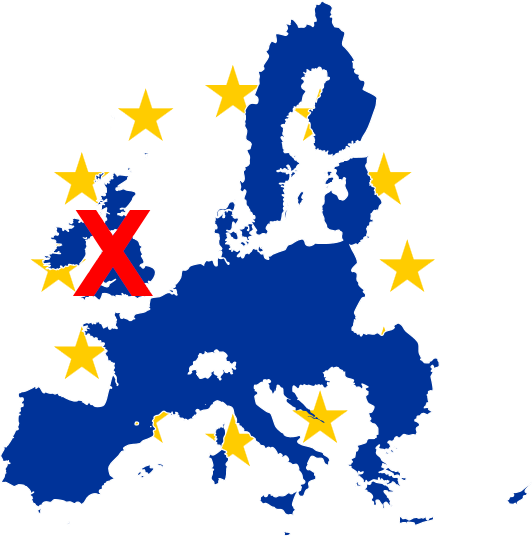 First there are the Brexit negotiations, which are likely to prove long and difficult and could damage confidence in the economy. There may be adverse effects on both inward and domestic investment and possible increased capital outflows. At the press conference to the Bank of England’s February 2017 Inflation Report, the governor stated that “investment is expected to be around a quarter lower in three years’ time than projected prior to the referendum, with material consequences for productivity, wages and incomes”.
First there are the Brexit negotiations, which are likely to prove long and difficult and could damage confidence in the economy. There may be adverse effects on both inward and domestic investment and possible increased capital outflows. At the press conference to the Bank of England’s February 2017 Inflation Report, the governor stated that “investment is expected to be around a quarter lower in three years’ time than projected prior to the referendum, with material consequences for productivity, wages and incomes”.
Second, the fall in the sterling exchange rate is putting upward pressure on inflation. The Bank of England forecasts that CPI inflation will peak at around 2.8% in early 2018. With nominal real wages lagging behind prices, real wages are falling and will continue to do so. As well as from putting downward pressure on living standards, it will tend to reduce consumption and the rate of economic growth.
 Consumer debt has been rising rapidly in recent months, with credit-card debt reaching an 11-year high in February. This has helped to support growth. However, with falling real incomes, a lack of confidence may encourage people to cut back on new borrowing and hence on spending. What is more, concerns about the unsustainability of some consumer debt has encouraged the FCA (the financial sector regulator) to review the whole consumer credit industry. In addition, many banks are tightening up on their criteria for granting credit.
Consumer debt has been rising rapidly in recent months, with credit-card debt reaching an 11-year high in February. This has helped to support growth. However, with falling real incomes, a lack of confidence may encourage people to cut back on new borrowing and hence on spending. What is more, concerns about the unsustainability of some consumer debt has encouraged the FCA (the financial sector regulator) to review the whole consumer credit industry. In addition, many banks are tightening up on their criteria for granting credit.
Retail spending, although rising in February itself, fell in the three months to February – the largest fall for nearly seven years. Such falls are likely to continue.
So if the current boom in the economy will soon end, then, according to political business cycle theory, the government is right to have called a snap election.
Articles
Gloomy economic outlook is why Theresa May was forced to call a snap election The Conversation, Richard Murphy (18/4/17)
What does Theresa May’s general election U-turn mean for the economy? Independent, Ben Chu (18/4/17)
It’s not the economy, stupid – is it? BBC News Scotland, Douglas Fraser (18/4/17)
Biggest fall in UK retail sales in seven years BBC News (21/4/17)
Sharp drop in UK retail sales blamed on higher prices Financial Times, Gavin Jackson (21/4/17)
Shoppers cut back as inflation kicks in – and top Bank of England official says it will get worse The Telegraph, Tim Wallace Szu Ping Chan (21/4/17)
Retail sales volumes fall at fastest quarterly rate in seven years Independent, Ben Chu (21/4/17)
Statistical Bulletin
Retail sales in Great Britain: Mar 2017 ONS (21/4/17)
Questions
- For what reasons might economic growth in the UK slow over the next two to three years?
- For what reasons might economic growth increase over the next two to three years?
- Why is forecasting UK economic growth particularly difficult at the present time?
- What does political business cycle theory predict about the behaviour of governments (a) with fixed terms between elections; (b) if they can choose when to call an election?
- How well timed is the government’s decision to call an election?
- If retail sales are falling, what other element(s) of aggregate demand may support economic growth in the coming months?
- How does UK productivity compare with that in other developed countries? Explain why.
- What possible trading arrangements with the EU could the UK have in a post-Brexit deal? Discuss their likelihood and their impact on economic growth?
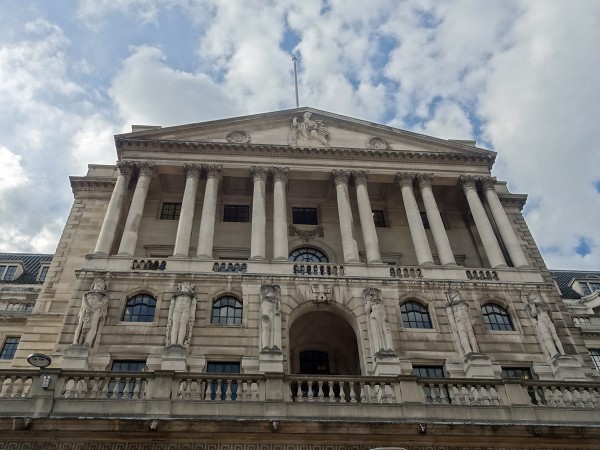 When UK unemployment was 7.7% in July 2013, Mark Carney, the newly arrived governor of the Bank of England, said that the Bank would probably have to rise interest rates when the unemployment rate dropped below 7%. Below that rate, it was expected that inflation would rise. In other words, 7% was the NAIRU – the non-accelerating rate of inflation. The most recent figure for the unemployment rate is 4.8% and yet the Bank of England has not raised interest rates. In fact, in response to the Brexit vote, it cut Bank Rate from 0.5% to 0.25% in August last year. (Click here for a PowerPoint of the chart below.)
When UK unemployment was 7.7% in July 2013, Mark Carney, the newly arrived governor of the Bank of England, said that the Bank would probably have to rise interest rates when the unemployment rate dropped below 7%. Below that rate, it was expected that inflation would rise. In other words, 7% was the NAIRU – the non-accelerating rate of inflation. The most recent figure for the unemployment rate is 4.8% and yet the Bank of England has not raised interest rates. In fact, in response to the Brexit vote, it cut Bank Rate from 0.5% to 0.25% in August last year. (Click here for a PowerPoint of the chart below.)
The NAIRU is a similar, although not identical, concept to the natural rate of unemployment. The natural rate is the equilibrium rate consistent with an overall long-term balance of aggregate labour demand and supply: i.e. the rate after short-term cyclical movements in unemployment have been discounted. It is thus a long-term concept.
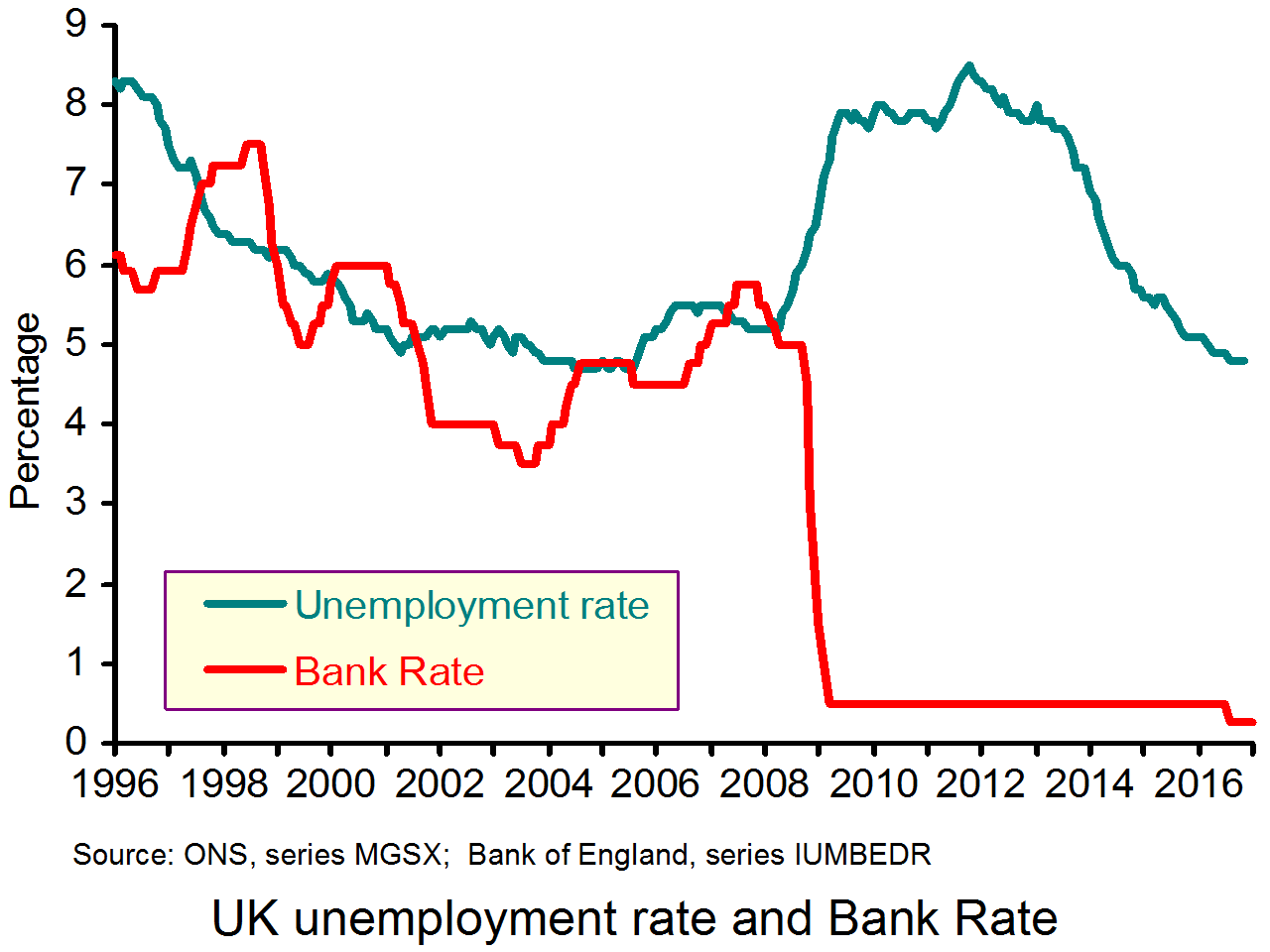 The NAIRU, although similar, focuses on the relationship between inflation and unemployment. With inflation caused solely by demand-side factors, the natural rate and the NAIRU will be similar if not identical. However, if cost-push factors change – say there is a poor harvest, which pushes up food prices and inflation (temporarily), or a substantial depreciation of the exchange rate caused by political factors (such as Brexit) – the NAIRU would increase, at least in the short term, as a higher rate of unemployment would be necessary to stop inflation rising. In the long term, although being defined differently, the NAIRU and the natural rate will be the same.
The NAIRU, although similar, focuses on the relationship between inflation and unemployment. With inflation caused solely by demand-side factors, the natural rate and the NAIRU will be similar if not identical. However, if cost-push factors change – say there is a poor harvest, which pushes up food prices and inflation (temporarily), or a substantial depreciation of the exchange rate caused by political factors (such as Brexit) – the NAIRU would increase, at least in the short term, as a higher rate of unemployment would be necessary to stop inflation rising. In the long term, although being defined differently, the NAIRU and the natural rate will be the same.
In practice, because the Bank of England is targeting inflation at a 24-month time horizon, the NAIRU for the UK at that point could also be seen as the natural rate.
So with the Bank of England not raising interest rates despite the considerable fall in the unemployment rate, does this imply a fall in the natural rate of unemployment? The answer is yes. The reason has to do with changes in the structure of the labour market.
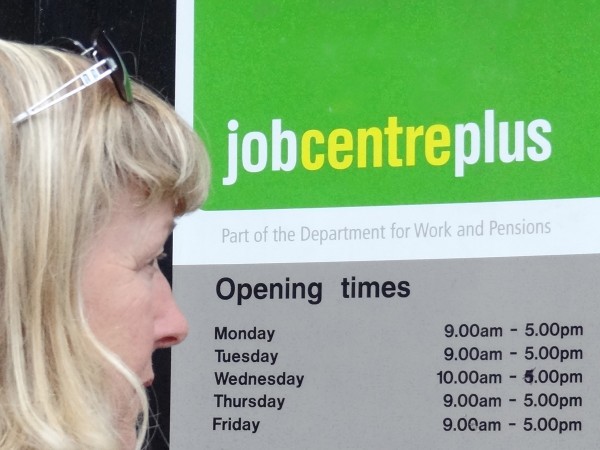 The proportion of young people and women with children returning to the labour market has fallen. Such people have a higher-than-average rate of unemployment since they typically spend a period of time searching for a job.
The proportion of young people and women with children returning to the labour market has fallen. Such people have a higher-than-average rate of unemployment since they typically spend a period of time searching for a job.
Tax and benefit reforms over the years have increased the incentive for the unemployed to take work.
Perhaps the biggest factor is a greater flexibility in the labour market. As union power has waned and as people are increasingly working on flexible contracts, including zero-hour contracts, so this has moderated wage increases. At the same time, many firms are facing increased competition both from abroad and domestically via the Internet. This has put downward pressure on prices and hence on the wages firms are willing to pay.
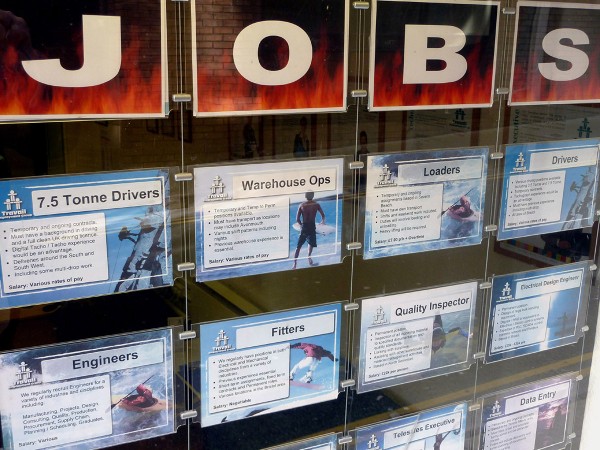 The effect has been a fall in the NAIRU and probably the natural rate. Frictions in the labour market have reduced and people losing their jobs because of changes in industrial structure find it easier to get jobs in low-skilled service industries, where employers’ risks of taking on such workers have fallen because of the loss of rights for such workers.
The effect has been a fall in the NAIRU and probably the natural rate. Frictions in the labour market have reduced and people losing their jobs because of changes in industrial structure find it easier to get jobs in low-skilled service industries, where employers’ risks of taking on such workers have fallen because of the loss of rights for such workers.
So what is the natural rate of unemployment today? It is certainly much lower than 7%; the consensus is that it is probably below 5%. As Kristin Forbes, External MPC Member of the Bank of England stated in a recent speech:
[Unemployment] is forecast to increase gradually from its current 4.8% to a high of 5.0% in the second half of 2017, before falling back to its current rate by the end of 2019. To put this in context, 5.0% was previously believed to be around the UK’s natural rate of unemployment – the rate below which unemployment could not fall without wages picking up to levels inconsistent with sustaining inflation around the 2% target. Unemployment at 5.0% is also below the average unemployment rate for the UK over the pre-crisis period from 1997 to 2007 (when it was 5.5%).
She went on to discuss just what the figure is for the natural, or ‘equilibrium’, rate of unemployment (U*). One problem here is that there is considerable uncertainty over the figure in the current forecast made by the Bank.
[An] assumption in the forecast about which there is substantial uncertainty is of the equilibrium unemployment rate – or U* for short. Since I have been on the MPC, the Committee has assumed that U* was around 5%. This implied that the more by which unemployment exceeded 5%, the more slack existed in the economy, and the less upward momentum would be expected in wages (controlling for other factors, such as productivity growth).
 As part of our annual assessment of regular supply-side conditions this January, Bank staff presented several pieces of analysis that suggested U* may be lower than 5% today [see, for example]. The majority of the MPC voted to lower our estimate of U* to 4.5%, based partly on the persistent weakness of wage growth over the past few years after accounting for other factors in our models. [See page 20 of the February 2017 Inflation Report.]
As part of our annual assessment of regular supply-side conditions this January, Bank staff presented several pieces of analysis that suggested U* may be lower than 5% today [see, for example]. The majority of the MPC voted to lower our estimate of U* to 4.5%, based partly on the persistent weakness of wage growth over the past few years after accounting for other factors in our models. [See page 20 of the February 2017 Inflation Report.]
My own assessment, however, suggested that although U* was likely lower than 5% today, it is likely not as low as 4.5%. If true, this would suggest that there is less slack in the economy than in the MPC’s central forecast, and wage growth and inflation could pick up faster than expected.
Against that, however, uncertainty related to Brexit negotiations could make firms more cautious about raising wages, thereby dampening wage growth no matter where unemployment is relative to its equilibrium. Moreover, even if we could accurately measure the level of U* in the economy today, it could easily change over the next few years as the labour force adjusts to any changes in the movement of labour between the UK and European Union.
Determining the precise figure of the current natural rate of unemployment, and predicting it for the medium term, is very difficult. It involves separating out demand-side factors, which are heavily dependent on expectations. It also involves understanding the wage elasticity of labour supply in various markets and how this has been affected by the increased flexibility of these markets.
Articles
When will Britons get a pay rise? The Guardian, Phillip Inman (26/2/17)
BoE decision, Inflation Report – Analysts react DigitalLook, Alexander Bueso (2/2/17)
Bank of England hikes UK economic growth forecasts but warns of rising inflation The Telegraph, Szu Ping Chan (2/2/17)
Bank of England publications
Inflation Report Bank of England (February 2017)
A MONIAC (not manic) economy Bank of England Speeches, Kristin Forbes (8/2/17)
The labour market Bank of England Speeches, Michael Saunders (31/1/17)
Questions
- Distinguish between the following terms: natural rate of unemployment, NAIRU, equilibrium rate of unemployment, disequilibrium rate of unemployment.
- For what reasons did the Monetary Policy Committee members feel that the equilibrium rate of unemployment might be as low as 4.25%?
- Why might it be as high as 5%?
- How are changes in migration trends likely to affect (a) wage growth and (b) unemployment?
- How is the amount of slack in an economy measured? What impact does the degree of slack have on wage growth and inflation?
- What is meant by the ‘gig’ economy? How has the development of the gig economy impacted on unemployment and wages?
- Why has there been a considerable rise in self employment?
- How may questions of life style choice and control over the hours people wish to work impact on the labour market?
- If people are moving jobs less frequently, does this imply that the labour market is becoming less flexible?
- Why may firms in the current climate be cautious about raising wages even if aggregate demand picks up?
 Is too much expected of economists? When economic forecasts turn out to be wrong, as they often are, economists are criticised for having inaccurate or unrealistic models. But is this a fair criticism?
Is too much expected of economists? When economic forecasts turn out to be wrong, as they often are, economists are criticised for having inaccurate or unrealistic models. But is this a fair criticism?
The following article by Richard Whittle from Manchester Metropolitan University looks at what economists can and cannot do. The article highlights two key problems for economic forecasting.
The first concerns human behaviour, which is influenced by a whole range of factors and can change very rapidly in response to changing circumstances. Moods of optimism or pessimism can quickly spread in response to a news item, such as measures announced by Donald Trump or latest data on growth or the housing market.
The second concerns the whole range of possible economic shocks. Such shocks, by their very nature, are hard to predict and can quickly make forecasts wrong. They could be a surprise election result, a surprise government policy change, a natural disaster, a war or a series of terrorist attacks. And these shocks, in turn, affect human behaviour. Consumption and investment may rise or fall as the events affect confidence and herd behaviour.
But is it a fair criticism of economics that it cannot foretell the future? Do economists, as the article says, throw up their hands and curse economics as a futile endeavour? Not surprisingly, the answer given is no! The author gives an analogy with medicine.
A doctor cannot definitely prevent illness, but can offer advice on prevention and hopefully offer a cure if you do get ill. This is the same for the work economists do.
Economists can offer advice on preventing crises or slowdowns but cannot definitively prevent them from happening. Economists can also offer robust advice on restoring growth, although when the advice is that the economy has grown too fast and should slow, it is often not welcomed by policy makers.
Helping understanding the various drivers in an economy and how humans are likely to respond to various incentives is a key part of what economists do. But making predictions with 100% certainty is asking too much of economists.
 And just as medical professionals can predict that if you smoke, eat unhealthy food or take no exercise you are likely to be less healthy and die younger, but cannot say precisely when an individual will die, so too economists can predict that certain policy measures are likely to increase or decrease GDP or employment or inflation, but they cannot say precisely how much they will be affected.
And just as medical professionals can predict that if you smoke, eat unhealthy food or take no exercise you are likely to be less healthy and die younger, but cannot say precisely when an individual will die, so too economists can predict that certain policy measures are likely to increase or decrease GDP or employment or inflation, but they cannot say precisely how much they will be affected.
As the article says, “the true value of the economist lies not in mystical fortune telling, but in achieving a better understanding of the nature of the economies in which we live and work.”
Article
How to be an economist in 2017 The Conversation, Richard Whittle (24/1/17)
Questions
- For what reasons has economics been ‘in crisis’? What is the solution to this crisis?
- Look at some macroeconomic forecasts for a country of your choice made two years ago for today (see, for example, forecasts made by the IMF, OECD or a central bank). How accurate were they? Explain any inaccuracies.
- To what extent is economic forecasting like weather forecasting?
- What is meant by cumulative causation? Give some examples. Why does cumulative causation make economic forecasting difficult?
- How is the increased usage of contactless card payments likely to affect spending patterns? Explain why.
- Why is it difficult to forecast the effects of Brexit?
- How can economic advisors help governments in designing policy?
- Why do people tend to overweight high probabilities and underweight low ones?
 Economic forecasting came in for much criticism at the time of the financial crisis and credit crunch. Few economists had predicted the crisis and its consequences. Even Queen Elizabeth II, on a visit to the London School of Economics in November 2008, asked why economists had got it so wrong. Similar criticisms have emerged since the Brexit vote, with economic forecasters being accused of being excessively pessimistic about the outcome.
Economic forecasting came in for much criticism at the time of the financial crisis and credit crunch. Few economists had predicted the crisis and its consequences. Even Queen Elizabeth II, on a visit to the London School of Economics in November 2008, asked why economists had got it so wrong. Similar criticisms have emerged since the Brexit vote, with economic forecasters being accused of being excessively pessimistic about the outcome.
The accuracy of economic forecasts was one of the topics discussed by Andy Haldane, Chief Economist at the Bank of England. Speaking at the Institute for Government in London, he compared economic forecasting to weather forecasting (see section from 15’20” in the webcast):
“Remember that? Michael Fish getting up: ‘There’s no hurricane coming but it will be very windy in Spain.’ Very similar to the sort of reports central banks – naming no names – issued pre-crisis, ‘There is no hurricane coming but it might be very windy in the sub-prime sector.” (18’40”)
The problem with the standard economic models which were used for forecasting is that they were essentially equilibrium models which work reasonably well in ‘normal’ times. But when there is a large shock to the economic system, they work much less well. First, the shocks themselves are hard to predict. For example, the sub-prime crisis in 2007/8 was not foreseen by most economists.
Then there is the effect of the shocks. Large shocks are much harder to model as they can trigger strong reactions by consumers and firms, and governments too. These reactions are often hugely affected by sentiment. Bouts of pessimism or even panic can grip markets, as happened in late 2008 with the collapse of Lehman Brothers. Markets can tumble way beyond what would be expected by a calm adjustment to a shock.
It can work the other way too. Economists generally predicted that the Brexit vote would lead to a fall in GDP. However, despite a large depreciation of sterling, consumer sentiment held up better than was expected and the economy kept growing.
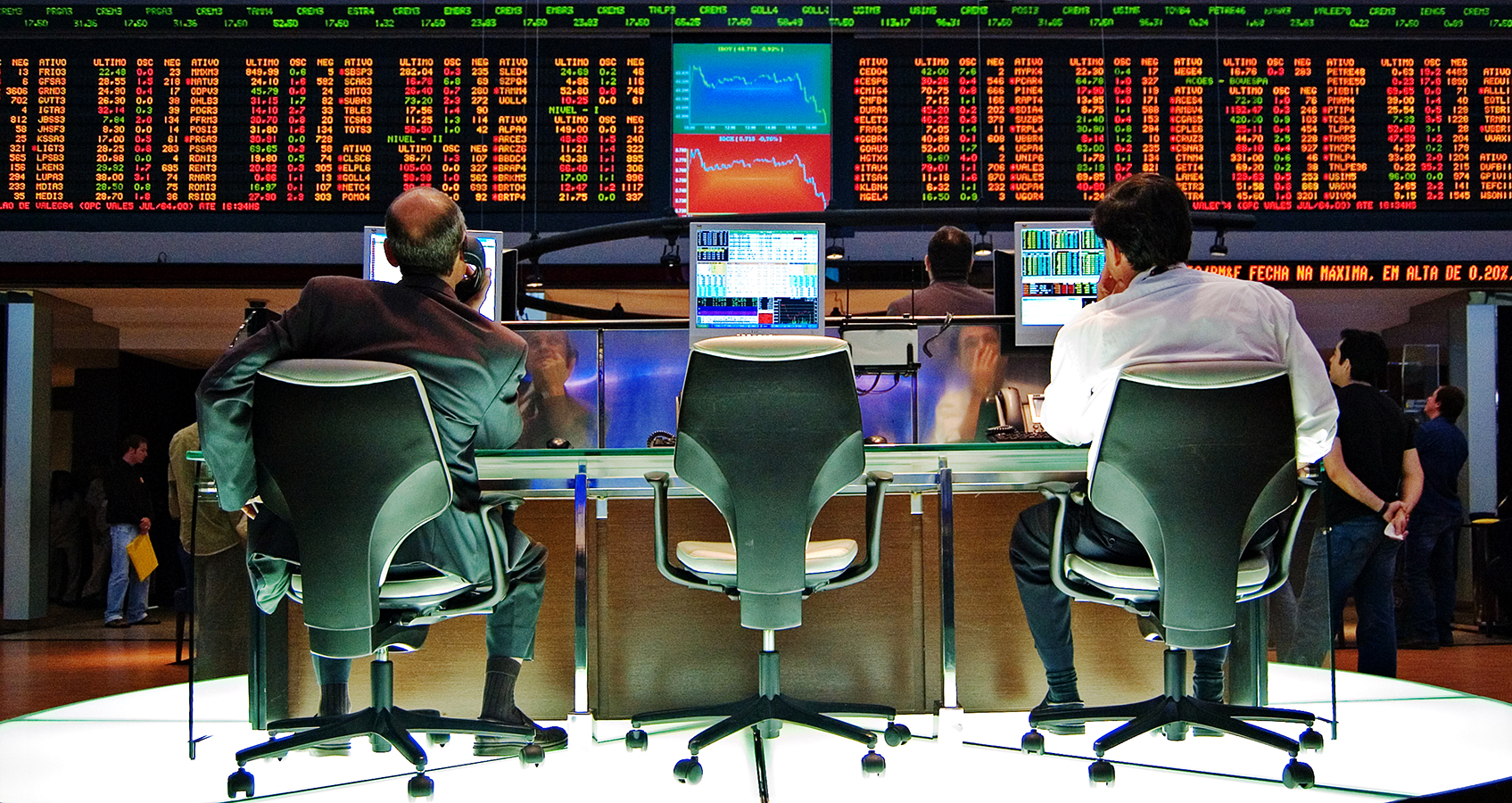 But is it fair to compare economic forecasting with weather forecasting? Weather forecasting is concerned with natural phenomena and only seeks to forecast with any accuracy a few days ahead. Economic forecasting, if used correctly, highlights the drivers of economic change, such as government policy or the Brexit vote, and their likely consequences, other things being equal. Given that economies are constantly being affected by economic shocks, including government or central bank actions, it is impossible to forecast the state of the macroeconomy with any accuracy.
But is it fair to compare economic forecasting with weather forecasting? Weather forecasting is concerned with natural phenomena and only seeks to forecast with any accuracy a few days ahead. Economic forecasting, if used correctly, highlights the drivers of economic change, such as government policy or the Brexit vote, and their likely consequences, other things being equal. Given that economies are constantly being affected by economic shocks, including government or central bank actions, it is impossible to forecast the state of the macroeconomy with any accuracy.
This does not mean that forecasting is useless, as it can highlight the likely effects of policies and take into account the latest surveys of, say, consumer and business confidence. It can also give the most likely central forecast of the economy and the likely probabilities of variance from this central forecast. This is why many forecasts use ‘fan charts’: see, for example, Bank of England forecasts.
What economic forecasts cannot do is to predict the precise state of the economy in the future. However, they can be refined to take into account more realistic modelling, including the modelling of human behaviour, and more accurate data, including survey data. But, however refined they become, they can only ever give likely values for various economic variables or likely effects of policy measures.
Webcast
 Andy Haldane in Conversation Institute for Government (5/1/17)
Andy Haldane in Conversation Institute for Government (5/1/17)
Articles
‘Michael Fish’ Comments From Andy Haldane Pounced Upon By Brexit Supporters Huffington Post, Chris York (6/1/17)
Crash was economists’ ‘Michael Fish’ moment, says Andy Haldane BBC News (6/1/17)
The Bank’s ‘Michael Fish’ moment BBC News, Kamal Ahmed (6/1/17)
Bank of England’s Haldane admits crisis in economic forecasting Financial Times, Chris Giles (6/1/17)
Chief economist of Bank of England admits errors in Brexit forecasting BBC News, Phillip Inman (5/1/17)
Economists have completely failed us. They’re no better than Mystic Meg The Guardian, Simon Jenkins (6/1/17)
Five things economists can do to regain trust The Guardian, Katie Allen and Phillip Inman (6/1/17)
Andy Haldane: Bank of England has not changed view on negative impact of Brexit Independent, Ben Chu (5/1/17)
Big data could help economists avoid any more embarrassing Michael Fish moments Independent, Hamish McRae (7/1/17)
Questions
- In what ways does economic forecasting differ from weather forecasting?
- How might economic forecasting be improved?
- To what extent were the warnings of the Bank of England made before the Brexit vote justified? Did such warnings take into account actions that the Bank of England was likely to take?
- How is the UK economy likely to perform over the coming months? What assumptions are you making here?
- Brexit hasn’t happened yet. Why is it extremely difficult to forecast today what the effects of actually leaving the EU will be on the UK economy once it has happened?
- If economic forecasting is difficult and often inaccurate, should it be abandoned?
- The Bank of England is forecasting that inflation will rise in the coming months. Discuss reasons why this forecast is likely to prove correct and reasons why it may prove incorrect.
- How could economic forecasters take the possibility of a Trump victory into account when making forecasts six months ago of the state of the global economy a year or two ahead?
- How might the use of big data transform economic forecasting?
 With the effects of the depreciation of sterling feeding through into higher prices, so the rate of inflation has risen. The latest figures from the ONS show that in the year to April 2017, CPI inflation was 2.7% – up from 2.3% in the year to March. The largest contributors to higher prices were transport costs and housing and household services.
With the effects of the depreciation of sterling feeding through into higher prices, so the rate of inflation has risen. The latest figures from the ONS show that in the year to April 2017, CPI inflation was 2.7% – up from 2.3% in the year to March. The largest contributors to higher prices were transport costs and housing and household services. But forecasting is dependent on a range of assumptions, not least of which are assumptions about consumer and business expectations. These, in turn, depend on a whole range of factors, such as the outcome of the UK election, the Brexit negotiations, commodity prices, world growth rates and international events, such as the actions of Donald Trump. Because of the uncertainty surrounding forecasts, the Bank of England uses fan charts. In the two fan charts illustrated below (from the May 2017 Inflation Report), the bands on constructed on the following assumptions:
But forecasting is dependent on a range of assumptions, not least of which are assumptions about consumer and business expectations. These, in turn, depend on a whole range of factors, such as the outcome of the UK election, the Brexit negotiations, commodity prices, world growth rates and international events, such as the actions of Donald Trump. Because of the uncertainty surrounding forecasts, the Bank of England uses fan charts. In the two fan charts illustrated below (from the May 2017 Inflation Report), the bands on constructed on the following assumptions:











